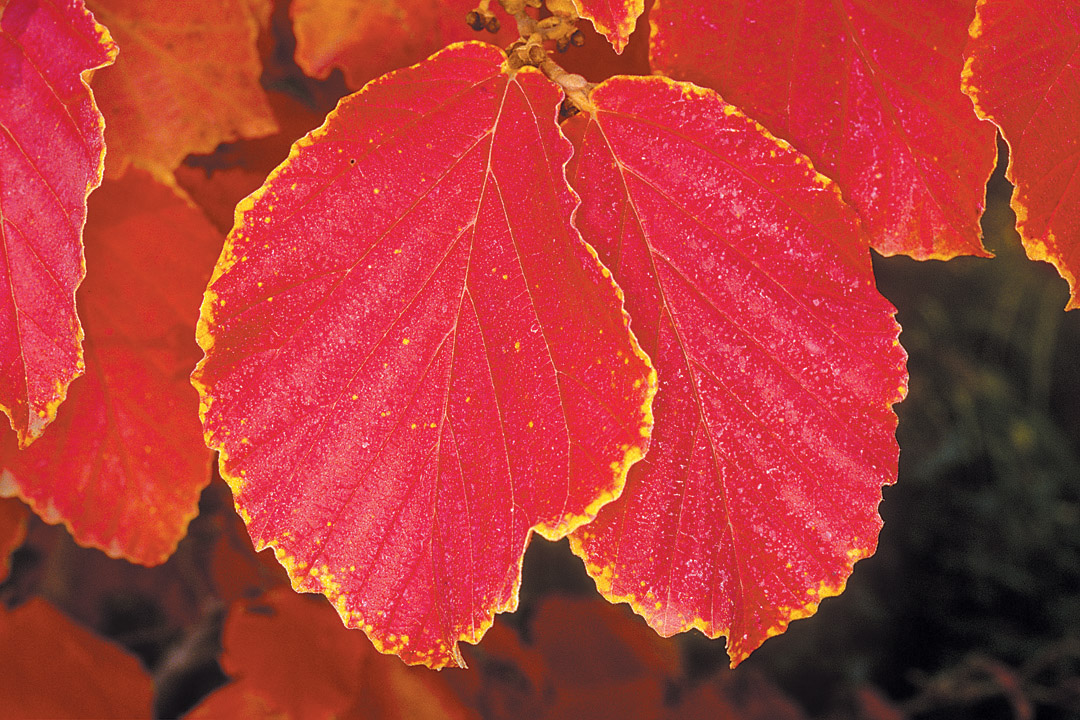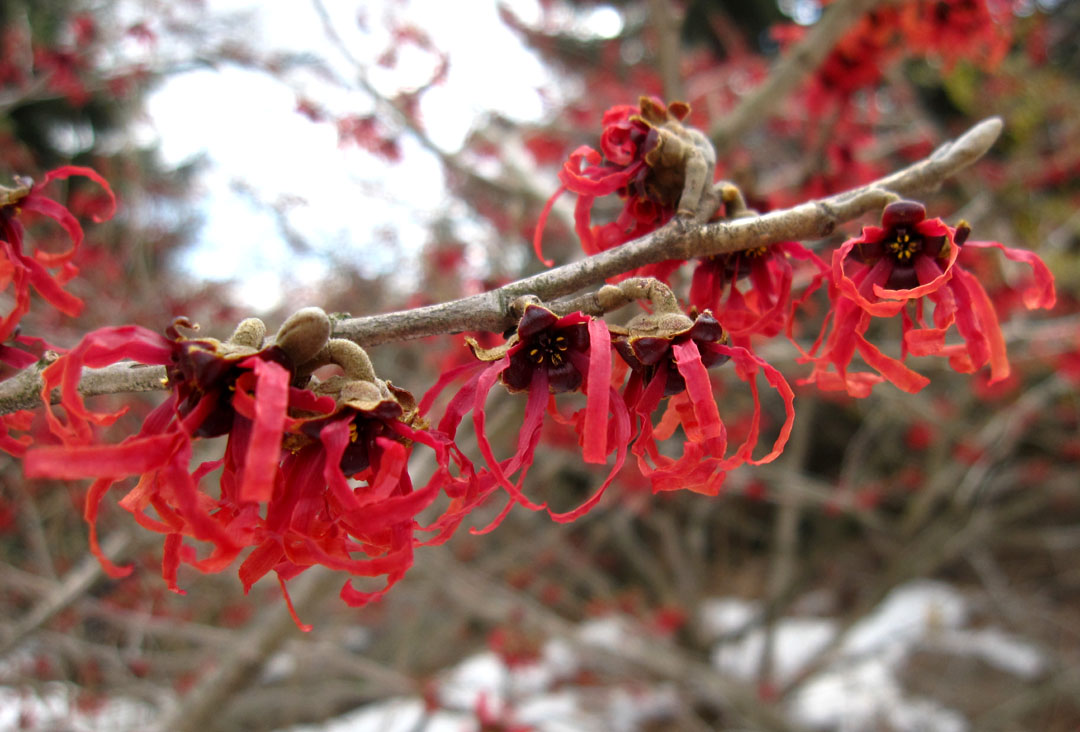Autumn Color
As the season change, discover new shrubs to add to your garden. Witch hazel is a fine example of a shrub which has beautiful autumn foliage and a striking fiery bloom in the Spring.
Easily grown in average, medium moisture, well-drained soils in full sun to part shade. Best flowering is in full sun. Prefers moist, acidic, organically rich soils. Promptly remove root suckers to prevent colonial spread. Prune in spring after flowering to control shape and size.
Noteworthy Characteristics
Hamamelis x intermedia hybrids are crosses between Japanese witch hazel (H. japonica) and Chinese witch hazel (H. mollis). These are medium to large deciduous shrubs that typically grow 12-20’ tall and are particularly noted for their mid to late winter flowers which appear before the foliage emerges.
Genus name comes from the Greek words hama meaning at the same time and melonmeaning apple or fruit in reference to the occurrence of both fruit and flowers at the same time on this shrub (particularly in the case of fall flowering members of the genus).
‘Diane’ is a red-flowered form with spreading branches. It typically grows to 8-12’ tall and to 10-15’ wide over 10 years. It is noted for its winter-blooming, mildly fragrant, red to copper-red flowers (to 1” long), each having four, narrow, ribbon-like, crinkly petals. Axillary clusters of these flowers bloom along the stems from late January to March. Broad-oval green leaves (to 6” long) turn attractive shades of yellow, orange and red in fall.
Problems
No serious insect or disease problems. Occasional insect galls (small wasps) appear on the foliage. Japanese beetles may chew on the leaves in some areas.
Garden Uses
Shrub borders, woodland gardens. Screen or tall hedge. Good specimen due to late winter flowers, attractive summer foliage and fall color.


